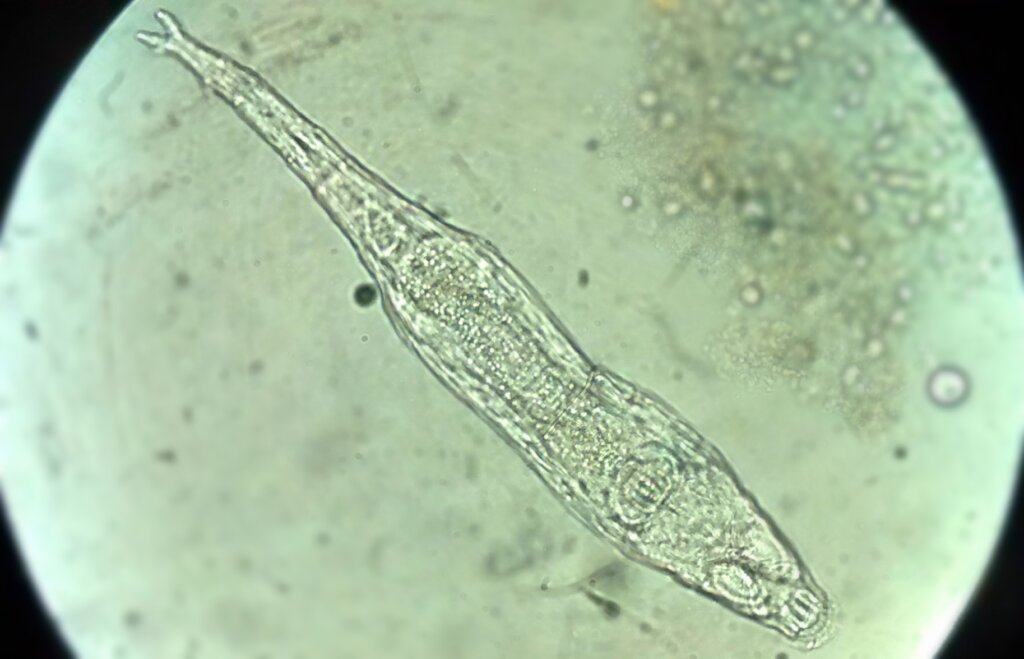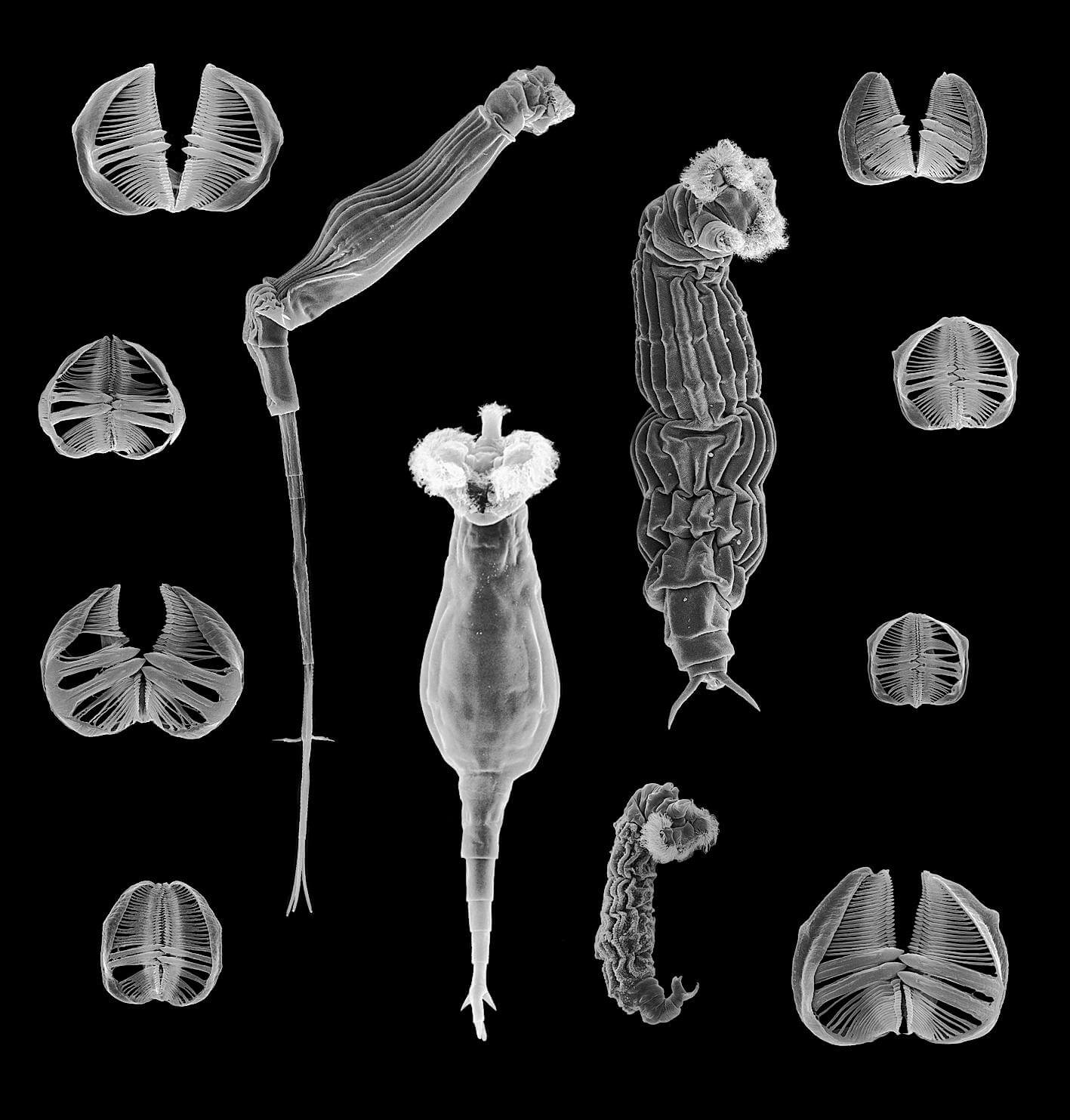Rotifers: A 24,000 Year-Old Microorganism that Came Back to Life

One of the most fantastic things in the minds of some writers is the possibility of being cryogenically frozen and sleeping for years. However, at least for complex living beings, it’s impossible to achieve this without dying in the attempt, or so it was believed until 2021. During research carried out in Antarctica, a rotifer (Bdelloidea) was discovered inside the permafrost, revealing its incredible ability. Find out all about rotifers in this article.
As you can imagine, this organism had been frozen for several years and is one of the first multicellular beings capable of “reviving”, despite the time that has elapsed. This species is invisible to the eye, but thanks to its amazing ability to survive, it has made it to the present day. Read on to learn more about the history of this tiny microorganism.
What are rotifers?
This group of animals are microscopic, ranging in size from 0.2 to 1 millimeter long. These organisms inhabit fresh and salty aquatic environments, moist soil, mosses, lichens, and any type of environment with excess water. The physical shape of rotifers is distinctive, because their body resembles a kind of wine glass, wide at the head, but slender at the pedicel.
Specifically, their bodies are divided into three sections: head, trunk, and foot. Under the light of the microscope, certain distinctive characteristics of each region are observed, and we list them below:
- Head: This area presents a crown of cilia, which are a kind of microscopic tentacles, whose movement allows them to create small currents. In fact, these oscillations are the reason for their name, since they seem to “carry a wheel” on their head. This is the literal meaning of the Latin rotifera.
- Trunk: This houses all the organs that process food, such as the intestine, stomach, and cloaca. Although each species may be slightly different, it’s generally the widest region of the body.
- Foot or pedicel: At first glance, it looks like a kind of tail, capable of stretching and retracting. This section is used to crawl through the environment or to anchor itself to a specific area.
Despite its size, the rotifer group is very successful in surviving. In fact, there are more than 2,000 described species worldwide. This isn’t just a coincidence, as they have a dormancy mechanism, which makes them resistant to droughts, extreme cold, chemical changes in water, and food shortages.

Meeting the past
To learn more about the life that populated the earth millions of years ago, certain regions of the poles are often used, where the cold created permanent ice sheets.
These sites are called permafrost, whose particularity is to contain “mummies” of living beings, trapped inside for many eras. This qualifies them as true time capsules, which help us to learn more about the past.
With this in mind, the team, led by researcher Lyubov Shmakova, collected some of the permafrost soil in northeastern Siberia. While processing the ice, they noticed that a microorganism began to move. When they analyzed it, they understood what was happening: a beautiful rotifer had been trapped for years in the ice and was coming back to life.
Characteristics of the microorganism Bdelloidea
Formally, the Bdelloidea are a subgroup of the rotifers that bring together most of their species. These organisms are known to be able to withstand temperatures of 0 and -20 degrees Celsius (32 to -4 Fahrenheit). In addition, almost all individuals belonging to this group are parthenogenetic.
These characteristics are important because they’re the main features of the microorganism frozen in permafrost. In other words, what was observed was a small animal in the shape of a rotifer, which revived after being thawed from the ice that sheltered it. With all of the above, there was no doubt that the specimen belonged to the Bdelloidea group.
According to an article in the journal Current Biology, published in 2021, the researchers who discovered this survivor were able to classify it as part of the genus Adineta.
To do so, they carried out genetic analyses, which demonstrated its closeness to this group. In addition, a process was also carried out to identify the age of this species. They were able to determine that it was frozen 23,000 to 24,000 years ago.

How did it survive so long?
Thanks to its ability to slow down its metabolism, it survived freezing inside the ice. In addition to this, the rotifer’s body underwent an internal modification, which allowed it to reduce its size to avoid freezing completely. In short, it became smaller and stopped its metabolism to remain in a state of dormancy called “cryptobiosis”.
This process was enough to save it from freezing to death, so it only took a few hours of warmth and it was back to normal.
Although the Bdelloidea group is known for exhibiting this type of dormancy, never before has an organism been recorded that has endured more than 10 years frozen. For this reason, this species is totally new, and may still have hidden secrets.
Bdelloidea survived and doesn’t intend to die!
The team that found this small animal tried to start reproducing it. To their surprise, this organism responded quite well, because it didn’t need to mate with other specimens to produce its offspring. This mechanism is called “parthenogenesis”. In essence, the female can become pregnant without the need for a male.
As you can see, this reborn species seems to be here to stay. The case of this small rotifer is exceptional, because multicellular animals aren’t usually able to resist so long under such conditions. However, it opens up a new panorama. Such ability may serve to learn more about cryobiology.
All cited sources were thoroughly reviewed by our team to ensure their quality, reliability, currency, and validity. The bibliography of this article was considered reliable and of academic or scientific accuracy.
- Chapman, A. D., (2009). Numbers of Living Species in Australia and the World, 2nd edition. Australian Biodiversity Information Services ISBN (online) 9780642568618. https://www.dcceew.gov.au/sites/default/files/env/pages/2ee3f4a1-f130-465b-9c7a-79373680a067/files/nlsaw-2nd-complete.pdf
- Gilbert, J. J. (1974). Dormancy in rotifers. Transactions of the American Microscopical Society, 490-513. https://www.jstor.org/stable/3225154
- Gladyshev, E. A., Meselson, M., & Arkhipova, I. R. (2008). Massive horizontal gene transfer in bdelloid rotifers. Science, 320(5880), 1210-1213. https://www.science.org/doi/abs/10.1126/science.1156407
- Iakovenko, N. S., Smykla, J., Convey, P., Kašparová, E., Kozeretska, I. A., Trokhymets, V., … & Janko, K. (2015). Antarctic bdelloid rotifers: diversity, endemism and evolution. Hydrobiologia, 761(1), 5-43. https://link.springer.com/article/10.1007/s10750-015-2463-2
- Lukashanets, D. A., & Maisak, N. N. (2023). Bdelloid rotifers (Bdelloidea, Rotifera) in shallow freshwater ecosystems of Thala Hills, East Antarctica. Polar Biology, 46(1), 87-102. https://link.springer.com/article/10.1007/s00300-022-03106-4
- Segers, H. (2007). Global diversity of rotifers (Rotifera) in freshwater. Freshwater Animal Diversity Assessment, 49-59. https://link.springer.com/chapter/10.1007/978-1-4020-8259-7_6
- Shmakova, L., Malavin, S., Iakovenko, N., Vishnivetskaya, T., Shain, D., Plewka, M., & Rivkina, E. (2021). A living bdelloid rotifer from 24,000-year-old Arctic permafrost. Current Biology, 31(11), R712-R713. https://www.cell.com/current-biology/fulltext/S0960-9822(21)00624-2?utm_source=EA
- Wallace, R. L., Snell, T. W., & Smith, H. A. (2015). Phylum rotifera. In Thorp and Covich’s Freshwater Invertebrates (pp. 225-271). Academic Press. https://www.sciencedirect.com/science/article/abs/pii/B9780123850263000139
